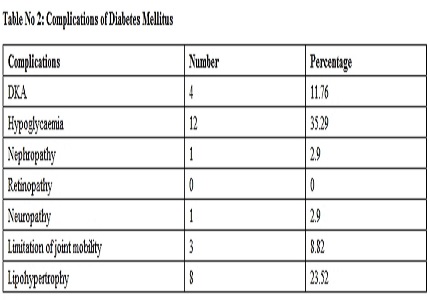Screening of young children between 2-24 months of Age with a first febrile UTI for VUR with imaging modalities
Abstract
Background: Urinary tract infection (UTI) is one of the most common serious bacterial illnesses affecting children. The presence of moderate to severe vesicouretheral reflux (VUR), particularly if bilateral, is an important risk factor for pyelonephritis and renal scarring. Imaging studies, including renal ultrasonography (USG), technetium-99m– labelled dimercaptosuccinic acid (DMSA) scanning, and voiding cystourethrography (VCUG), are part of standard care after diagnosis of a first UTI in young children. This study was done to determine the sensitivity, specificity and predictive values of renal USG and DMSA scan findings for VUR.
Methods: All children between 2-24 months of age presenting with first febrile UTI were prospectively studied. All infants were hospitalized and investigated using renal USG, DMSA scan, and VCUG after diagnosis. The association among findings of USG, DMSA scan, and VCUG were evaluated.
Results: A total of 48 children were included in the study and screened, out of which there were abnormal results in 22 (45.8%) USG and 29(60.4%) DMSA scan. All grade VUR (I-V) was present in 8(16.7%) patients and high grade VUR (III-V) was present in 7(14.6%) patients. The sensitivities for detecting VUR of renal USG alone (75%) or DMSA scan alone (87.5%) were not as good as that of the “OR rule” strategy, which had 100% sensitivity and 100% negative predictive value.
Conclusions: Renal USG and DMSA scanning both should be routinely performed in young children with a first febrile UTI. VCUG is only indicated when abnormalities are apparent on either USG scanning or DMSA scanning or both.
Downloads
References
Tseng MH, Lin WJ, Tsung WL, Wang SR, Ling Chu M, Wang C. Does a normal DMSA obviate the performance of voiding cystourethrography in evaluation of young children after their first urinary tract infection? J Pediatr 2007 Jan;150(1):96-9.
Alper BS, Cirry SH. Urinary tract infection in children. Am Fam Physician 2005 Dec;72(12):2483-8.
Indian Society of Pediatric Nephrology. Revised statement on management of urinary tract infections. Indian Pediatr 2011 Sep;48(9):709-17.
Zamir G, Sakran W, Horowitz Y, Koren A, Miron D.Urinary tract infection: is there a need for routine renal ultrasonography? Arch Dis Child 2004 May;89(5):466-8. doi: 10.1136/adc.2002.019182.
Hellerstein S. Urinary tract infections. Pediatr Clin North Am 1995 Dec;42(6):1433-57.
Indian Pediatric Nephrology Group. Consensus statement on management of urinary tract infections. Indian Pediatr 2001 Oct;38(10):1106-15.
American Academy of Pediatrics Committee on Quality Improvement, Subcommittee on Urinary Tract Infection. Practice parameter: the diagnosis,treatment, and evaluation of the initial urinary tract infection in febrile infants and young children. Pediatrics 1999 April;103(4):843-52.
Ylinen E, Ala-Houhala M, Wikstrom S. Risk of renal scarring in vesicoureteral reflux detected either antenatally or during the neonatal period. Urology 2003 Jun;61(6):1238-42.
Alton DJ, LeQuesne GW, Gent R, Siegmann JW, Byard R. Sonographically demonstrated thickening of the renal pelvis in children. Pediatr Radiol 1992;22(6):426-9.
Jequier S, Rousseau O. Sonographic measurements of the normal bladder wall in children. Am J Roentgenol 1987 Sep;149(3):563-6.
J. J. Miranda Geelhoed, H. Rob Taal, Eric A. P. Steegers, Lidia R. Arends, Maarten Lequin, Henriëtte A. Moll, Albert Hofman, Albert J. van der Heijden, Vincent W. V. Jaddoe. Kidney growth curves in healthy children from the third trimester of pregnancy until the age of two years. The Generation R Study. Pediatr Nephrol 2010 Feb;25(2):289–298. doi: 10.1007/s00467-009-1335-2.
Lebowitz RL, Olbing H, Parkkulainen KV, et al. International Reflux Study in Children: international system of radiographic grading of vesicoureteric reflux. Pediatr Radiol 1985 Feb;15(2):105–9.
Gabrielle Williams, Jeffery T. Fletcher, Stephen I. Alexander, and Jonathan C. Craig. Vesicoureteral Reflux. J Am Soc Nephrol 2008 May;19(5): 847–862. doi: 10.1681/ASN.2007020245.
Weinstein S, Obuchowski NA, Lieber ML. Clinical evaluation of diagnostic tests. Am J Roentgenol 2005 Jan;184(1):14-19.
Hansson S, Dhamey M, Sigstrom O, Sixt R, Stokland E, Wennerstrom M, et al. Dimercapto-succinic acid scintigraphy instead of voiding cystourethrography for infants with urinary tract infection. J Urol 2004 Sep;172(3):1071-4.
Jakobsson B, Jacobson SH, Hjalmas K. Vesico-ureteric reflux and other risk factors for renal damage: identification of high- and low-risk children. Acta Paediatr Suppl 1999 Nov;431(88):31-9.
Hoberman A, Charron M, Hickey RW, Baskin M, Kearney DH, Wald ER. Imaging studies after a first febrile urinary tract infection in young children. N Engl J Med 2003 Jan;348(3):195-202.
Mahant S, Friedman J, MacArthur C. Renal ultrasound findings and vesicoureteral reflux in children hospitalised with urinary tract infection. Arch Dis Child 2002 Jun;86(6):419-20.
Benador D, Benador N, Slosman DO, Nussle D, Mermillod B, Girardin E. Cortical scintigraphy in the evaluation of renal parenchymal changes in children with pyelonephritis. J Pediatr 1994 Jan;124(1):17-20.
Fouzas S, Krikelli E, Vassilakos P, Gkentzi D, Papanastasiou DA, Salakos C. DMSA scan for revealing vesicoureteral reflux in young children with urinary tract infection. Pediatrics 2010 Sep;126(3):e513–9. doi: 10.1542/peds.2009-3635.
Tsai JD, Huang CT, Lin PY, Chang JH, Lee MD, Huang FY, Shih BF, Hung HY, Hsu CH, Kao HA, Lin CC. Screening high-grade vesicoureteral reflux in young infants with a febrile Urinary Tract Infection. Pediatr Nephrol 2012 Jun;27(6):955-963. doi: 10.1007/s00467-012-2104-1.
Preda I, Jodal U, Sixt R, Stokland E, Hansson S. Normal dimercaptosuccinic acid scintigraphy makes voiding cystourethrography unnecessary after urinary tract infection. J Pediatr 2007 Dec;151(6):581–584.
Lee MD, Lin CC, Huang FY, Tsai TC, Huang CT, Tsai JD. Screening young children with a first febrile urinary tract infection for high-grade vesicoureteral reflux with renal ultrasound scanning and technetium-99m-labeled dimercaptosuccinic acid scanning. J Pediatr 2009 Jun;154(6):797–802. doi: 10.1016/j.jpeds.2008.12.045.

Copyright (c) 2015 Author (s). Published by Siddharth Health Research and Social Welfare Society

This work is licensed under a Creative Commons Attribution 4.0 International License.


 OAI - Open Archives Initiative
OAI - Open Archives Initiative


